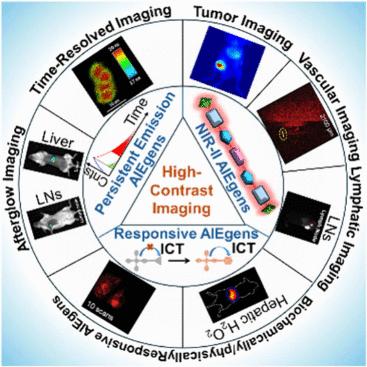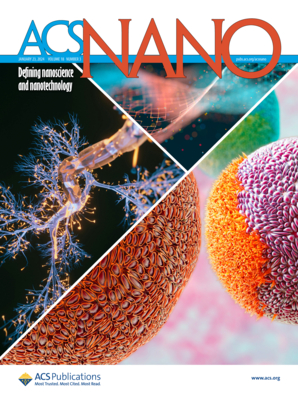Aggregation-Induced Emission Luminogens Realizing High-Contrast Bioimaging
IF 15.8
1区 材料科学
Q1 CHEMISTRY, MULTIDISCIPLINARY
引用次数: 0
Abstract
A revolutionary transformation in biomedical imaging is unfolding with the advent of aggregation-induced emission luminogens (AIEgens). These cutting-edge molecules not only overcome the limitations of traditional fluorescent probes but also improve the boundaries of high-contrast imaging. Unlike conventional fluorophores suffering from aggregation-caused quenching, AIEgens exhibit enhanced luminescence when aggregated, enabling superior imaging performance. This review delves into the molecular mechanisms of aggregation-induced emission (AIE), demonstrating how strategic molecular design unlocks exceptional luminescence and superior imaging contrast, which is crucial for distinguishing healthy and diseased tissues. This review also highlights key applications of AIEgens, such as time-resolved imaging, second near-infrared window (NIR-II), and the advancement of AIEgens in sensitivity to physical and biochemical cue-responsive imaging. The development of AIE technology promises to transform healthcare from early disease detection to targeted therapies, potentially reshaping personalized medicine. This paradigm shift in biophotonics offers efficient tools to decode the complexities of biological systems at the molecular level, bringing us closer to a future where the invisible becomes visible and the incurable becomes treatable.

实现高对比度生物成像的聚集诱导发射发光源
随着聚集诱导发射发光源(AIEgens)的出现,生物医学成像正在发生革命性的转变。这些前沿分子不仅克服了传统荧光探针的局限性,而且提高了高对比度成像的界限。不同于传统的荧光团遭受聚集引起的猝灭,AIEgens在聚集时表现出增强的发光,从而实现卓越的成像性能。这篇综述深入探讨了聚集诱导发射(AIE)的分子机制,展示了策略性分子设计如何解锁特殊的发光和卓越的成像对比度,这对于区分健康和病变组织至关重要。本文还重点介绍了AIEgens在时间分辨成像、第二近红外窗口(NIR-II)等方面的应用,以及AIEgens在物理和生化线索响应成像敏感性方面的进展。AIE技术的发展有望将医疗保健从早期疾病检测转变为靶向治疗,有可能重塑个性化医疗。生物光子学的这种范式转变为在分子水平上解码生物系统的复杂性提供了有效的工具,使我们更接近一个不可见变为可见,不可治愈变为可治疗的未来。
本文章由计算机程序翻译,如有差异,请以英文原文为准。
求助全文
约1分钟内获得全文
求助全文
来源期刊

ACS Nano
工程技术-材料科学:综合
CiteScore
26.00
自引率
4.10%
发文量
1627
审稿时长
1.7 months
期刊介绍:
ACS Nano, published monthly, serves as an international forum for comprehensive articles on nanoscience and nanotechnology research at the intersections of chemistry, biology, materials science, physics, and engineering. The journal fosters communication among scientists in these communities, facilitating collaboration, new research opportunities, and advancements through discoveries. ACS Nano covers synthesis, assembly, characterization, theory, and simulation of nanostructures, nanobiotechnology, nanofabrication, methods and tools for nanoscience and nanotechnology, and self- and directed-assembly. Alongside original research articles, it offers thorough reviews, perspectives on cutting-edge research, and discussions envisioning the future of nanoscience and nanotechnology.
 求助内容:
求助内容: 应助结果提醒方式:
应助结果提醒方式:


